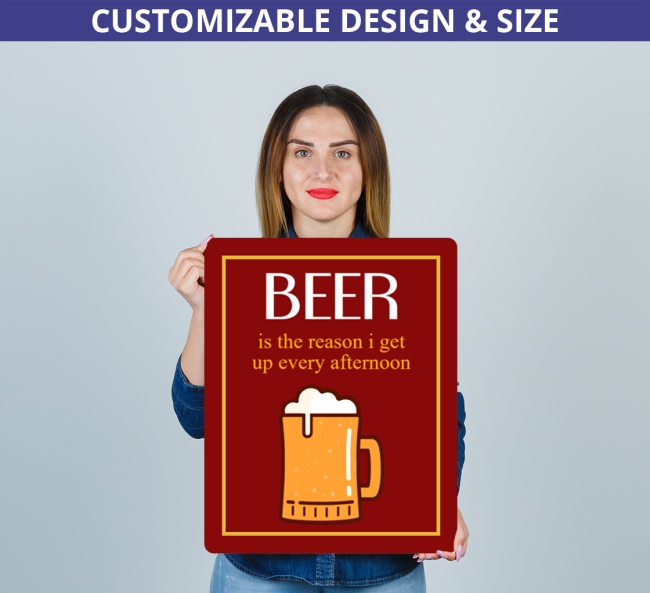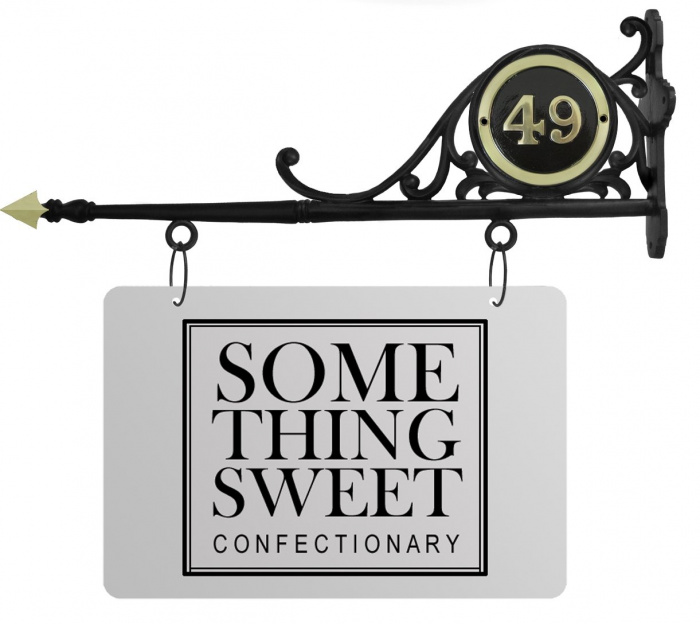New Tips For Deciding On Hanging Signs
New Tips For Deciding On Hanging Signs
Blog Article
What Are The Various Purposes Of Bar Signs?
The function of bar signs is a bit different. The function of bar signs differs for each. Branding
The purpose of this campaign is to create and strengthen the brand identity of the bar.
Often the bar's logo, name and signature color are usually included. The theme of the bar and its overall vibe should be reflected in the design.
Examples: Neon signs featuring the logo of the bar, or a custom-designed metal sign with the bar name.
2. Information
Use: Provide important information to patrons regarding the bar.
Features: Clear and easy to read text that explains important details, such as the hours of operation, Wi Fi passwords for the home as well as rules of conduct or bathroom locations.
The signs will indicate restrooms, or hours of operation on a wall next to the entrance.
3. Decorate your home using these decorative items
Purpose Enhance visual appeal of the bar.
Features: Contributes to the overall design of the bar. Usually more artistic and thematic. Specific information or text might not be provided.
Examples include vintage beer advertisements or signs that are humorous, funny or themed.
4. Promotional
Purpose: To promote specials, events, or products.
Features: Design with attractive images that highlight special deals or events coming up. Can include temporary elements or changeable elements.
Examples: chalkboards with daily specials; banners that advertise happy hour deals; posters for upcoming event.
5. Directional
Guide patrons in the bar.
Features Include: Use arrows with clear lines to guide customers in the area, for example bathrooms exits, restrooms, and other parts of the bar are located.
Examples: Signs pointing to bathrooms, "Exit" signs, directional arrows for various seating areas.
6. Regulatory/Compliance
Purpose: To comply with legal requirements and ensure security.
Highlights: Signs essential to meet legal requirements like smoking areas such as occupancy limits, smoking areas or emergency exits.
Examples "No Smoking" signs, occupancy limit notices, emergency exit signs.
7. Interactive
Intention to connect with customers and create interactive experiences
Features: Elements to encourage patron involvement, such a write-on surfaces or interactive digital elements.
Examples include chalkboards to display messages from customers or signs with QR codes that open to digital menus.
8. Thematic
Goal : To create an environment or theme.
Themes: Signs that are in line with the bar's theme and contribute to the overall atmosphere.
Examples: Pirate-themed signage in the nautical bar, rustic wooden signs in the country-themed bar.
9. Menu
Scope: To display the bar's food menu.
Features: Lists clearly the food and beverages, often with prices. The list can be changed or static.
Examples: Wall-mounted drink menus, digital screens displaying the rotating menu items.
Every bar sign serves an objective, and it is made to blend into the bar's atmosphere. Understanding the different types of signage will assist bar owners select and install signs that meet their requirements and enhance the experience their customers. See the top pub signs tips for site examples including novelty bar signs, hanging tavern sign, the staying inn sign, pub sign hanging, personalised hanging bar sign, personalised beer sign, home pub signs, hanging pub signs for garden, personalised metal pub signs, bar pub signs and more.
What Are The Differences Between Bar Signs In Relation To Lighting?
Bar signs vary significantly in terms of lighting, which affects their visibility, ambiance, and overall impact. The lighting changes can have a huge impact on bar signs. Neon Signs
Characteristics: Bright, colorful, classic.
Lighting Neon gas-filled tubes produce light when they are charged electrically.
Uses: Perfect to create a retro vintage style. Often used for branding and bar names.
Advantages: It's highly visible from an extended distance.
Negatives: They can be brittle and expensive to fix.
2. LED Signs
Characteristics: Energy-efficient, versatile, modern.
Lighting: Make use of light emitting diodes to give brilliant light.
Uses: It is suitable for outdoor and indoor signage, programmable displays and dynamic lighting effects.
Benefits: Energy-efficient and long-lasting. Can be programmed to change the colors or animations.
Negatives: It can be costly at first, but it can be a great savings on energy and maintenance costs.
3. Backlit Signs
Characteristics: Elegant, sophisticated, subtle.
Lighting: Put light sources such as fluorescent and LEDs behind translucent surfaces to produce soft diffused light.
Usage: Most often employed in modern menu boards, bar signs, and branding elements.
Advantages It has an elegant, clean appearance and improves reading even in dim light.
Advantages: Easy installation, however higher initial cost.
4. Signs for Edge-Lit
Characteristics: Sleek, contemporary, stylish.
Lighting: LEDs can be used to illuminate the edges of acrylic signs.
Applications: Excellent for modern, minimalist designs, often employed for informational or directional signs.
Benefits: Energy efficient, gives an attractive and elegant appearance.
Certain design styles cannot be restricted.
5. Ambient/Accent Lighting
Characteristics: Subtle, atmospheric, decorative.
Lighting Direct lighting is used to emphasize or highlight indications.
The uses for this product are It can enhance the atmosphere It is often used to emphasize themed decor or artwork.
Benefits: Creates an inviting and warm environment.
Disadvantages: May not provide enough direct light for readability.
6. Marquee Signs
Characteristics: Bold, theatrical, eye-catching.
Lighting Multiple light bulbs or LEDs are used around the edges of the sign.
Uses include exterior signs for events, creating vintage film appearances, and event promotional.
Advantages: Attractive and noticeable.
The disadvantages are that it can be expensive and requires maintenance.
7. Projection Signs
Characteristics: Dynamic, innovative, versatile.
Lighting: Light and images can be projected on surfaces using projectors.
Applications include: promotions and events display, dynamic and temporary promotions.
Advantages: Easily changeable No physical structure needed.
Disadvantages: Requires a controlled lighting environment, can not be as effective in bright lighting.
8. Fluorescent Signs
Characteristics: Bright, cost-effective, traditional.
Lighting: Uses fluorescent tube to provide light.
It is commonly used to create bigger indoor or outdoor signs.
Benefits: Bright, efficient and cost-effective for large signage.
Negatives: Less efficient in energy use. Can produce a more harsh light.
Lighting Considerations
Visibility
Neon and LED signs: Excellent for attracting your attention at an extended distance.
Edge-lit or backlit signs They are ideal to improve readability and to create an attractive and professional look.
Energy Efficiency
LED Signs: Highly energy-efficient and lasts for a long time.
Fluorescent and neon Signs: less efficient in energy use, with neon being more delicate.
Aesthetic Appeal
Neon and Marquee Signs: Perfect for retro and vintage styles.
Backlit and Edge-lit Signs are great for contemporary designs.
Ambient Lighting: Improves the overall ambience and atmosphere.
Maintenance
LED Signs: Low maintenance and durable.
neon signs and fluorescent signs They need more frequent maintenance and repairs could be possible.
Cost
LED and Backlit Signs: More upfront costs, but less operational costs.
Fluorescent Signs: Lower initial cost but higher long-term cost of energy.
Flexibility
Projection and Programmable LED Signs: Offer high flexibility for moving display and interactive content.
Traditional Signs: They're more rigid, however they often achieve a particular look.
The proper lighting can be used to create the desired ambience and effectively communicate with patrons. Have a look at the most popular garden bar signs for website tips including personalised outdoor pub signs, to the bar sign, home made bar sign, make a bar sign, personalised metal pub signs, bespoke bar signs, modern pub sign, personalised metal pub signs, pub signs to buy, small pub signs and more.
What Is The Main Difference Between Bar Signs That Are Interactive And Other Bar Signs?
Interactivity can be incorporated into bar signs in various ways to increase customer satisfaction and engage customers. Here are a few examples of how bar signs differ in their interactivity. Static Signs
Static Signs: They are signs that communicate information, but don't include any interactive elements.
Common Types: printed posters, painted murals or the standard neon signs.
2. Digital Displays
Digital signs can be capable of displaying real-time content, including videos, multimedia and even updates.
Touchscreen displays can be used to play interactive menus and games, as well as advertising content.
Benefits : Attract attention by delivering dynamic information. Encourage patron engagement.
3. QR Codes
QR Codes can link directly to social media profiles or menus.
Benefits : Make it simple to gain access to more information, promotions or loyalty programs.
4. LED Screens
Dynamic messaging: LED screens display animated text scrolling, scrolling or video clips.
LCDs with touch-enabled touchscreens permit users to interact with their content. This can include selecting menu options, or playing games.
Benefits : Draw attention to the content, create immersive experiences and convey information in a speedy manner.
5. Projection Mapping
Immersive Experiences Projection mapping alters the surfaces and provides interactive images and also telling stories.
Interactivity: Patrons are able to interact through interactive elements, such as games or virtual experiences.
Benefits: Make memorable experiences, improve the ambience, and promote social interaction.
6. Augmented Reality (AR).
Enhance Reality: AR overlays digital content onto the physical world offering interactive experiences.
AR-enabled signage allows patrons the chance to interact with virtual elements. For example they can see cocktail recipes and play virtual games.
Benefits: Reward patrons by engaging them and offer unique experiences to make your bar stand out.
7. Motion Sensors
Motion sensors are able to detect movement and activate interactive responses on signs.
Interactivity - Signs are able to react by changing their content by displaying animations or personalized messages in response to the patrons' actions.
Benefits: Increase engagement, create immersive environments, and surprise and delight patrons.
8. Social Media Integration
Online Interaction Signs include social media handles and hashtags to encourage customers to join on the internet.
User-generated Content: Inspire patrons to share photos of signage on social media expanding the bar's reach and visibility.
Benefits include a greater sense of community, increased brand awareness and the creation of user-generated content.
9. Interactive Lighting
Dynamic Effects Neon or LED signs that have interactive lighting are able to react to touch, sound or movement.
Interactivity: Signs change hue, brightness, or patterns in response to patron interactions or environmental indications.
Benefits: Create immersive ambiences and enhance the ambience and capture the attention of your guests.
10. Gamification
Interactive Games: Signs include interactive games or challenges to entertain patrons and encourage participation.
Offer discounts and freebies to encourage participants to take on challenges and even win games.
Benefits: Increase time of stay and encourage social interaction and encourage repeat visits.
Bar owners can create exciting experiences by using interactive elements into their signs. It will attract customers, increase brand awareness and allow them to differentiate themselves from the competition. Take a look at the recommended read what he said on bar sign hanging for more recommendations including make a pub sign, personalised metal bar signs, personalised hanging bar sign, garden bar signs, bar wall signs, signs for garden bar, small pub signs, personalised hanging bar sign, the pub sign, to the bar sign and more.